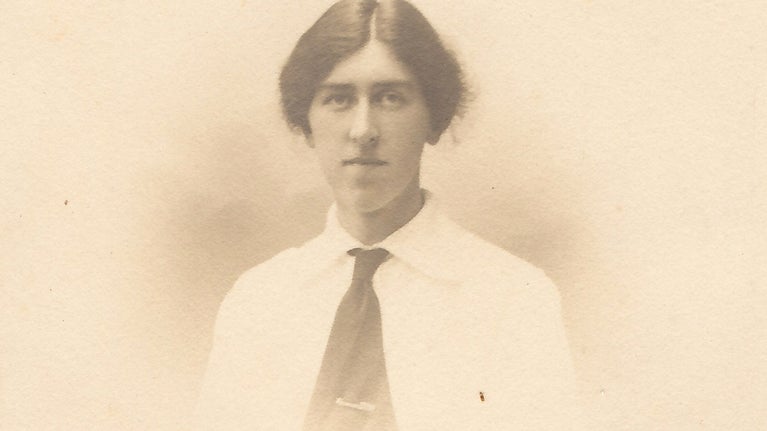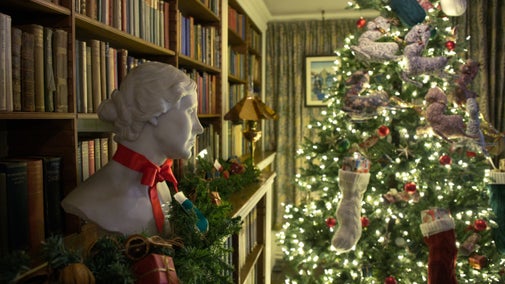
Discover more at Standen House and Garden
Find out when Standen House and Garden is open, how to get here, the things to see and do and more.

The youngest daughter of James and Margaret Beale, Helen knew her own mind from a young age. She was independent, asking Philip Webb to build her very own ‘little room’ she could play in without her older brothers and sisters getting in the way. Find out how she became involved in the First World War.
In 1910 Helen became qualified as being able to provide first aid to those injured, and soon completed a home nursing course. With her sister Maggie, she went on to join the East Grinstead branch of the Red Cross before the war, and shortly after the outbreak of war went out to France to nurse as a Voluntary Aid Detachment (VAD) nurse at the huge hospital camp at Etaples.
After serving 13 months in France, she returned to England due to Mrs Beale’s ill health. Feeling constrained by the VAD role in the UK, after the excitements of active service, she began to look around for another opening for her talents.
By 1917 the war was demanding more and more men to fight, but many remained in reserved occupations, exempting them from service at the Front. The solution, which did not please everyone, was to get women into occupations traditionally done by men. Women worked in munitions factories and were able to join the armed forces under allied organisations – first the Women's Army Auxiliary Corps (WAAC) and then the Women’s Royal Naval Reserve (WRNS, which quickly became the Wrens).
Helen was able to join the WRNS through the recommendation of a family friend, probably following the lead of Dame Katharine Furse. Furse had run the VADs but left because of constraints she found in the organisation. The Navy offered her the chance to set up the new women’s service and many of her former VADs followed her.
The First World War transformed the lives of women as much as the men who fought. For the first time they served in the armed forces and worked in men’s occupations which ultimately lead to them getting the vote.
Helen Beale was at the forefront of this change. She joined the newly formed WRNS and was instrumental in setting up the organisation that became known to most people as the Wrens.
Setting up a division of the WRNS in Dover in 1918, Helen acted as Assistant Principal where she set up organised record systems along with accommodation for recruits. Here she was quickly promoted to Deputy Principal, and by November the same year another promotion to Divisional Director meant a change of location to Devonport. Helen’s work with the WRNS was recognised in 1919 when she was awarded the OBE (Officer of the Most Excellent Order of the British Empire), however after the war the WRNS became disbanded, leaving Helen’s position to end in December 1919.
When the war ended, Helen continued to work with the Red Cross, she became Assistant Commandant of Detachment No. 68 Sussex, and was also a House Committee member at the Queen Victoria Hospital in East Grinstead from 1934 to 1963. Standen farm was also overseen by Helen in her later years.

Find out when Standen House and Garden is open, how to get here, the things to see and do and more.
Find out more about this modern home with historic influences and charming Arts and Crafts workmanship, designed and built for the Beale family at Standen in West Sussex.

Explore the family home of the Beales, designed by Philip Webb and furnished throughout by Morris & Co fabrics and wallpapers. An Arts and Crafts inspired comfortable country retreat.

Discover the Beale family, who commissioned Standen to be designed and built by architect Philip Webb .
